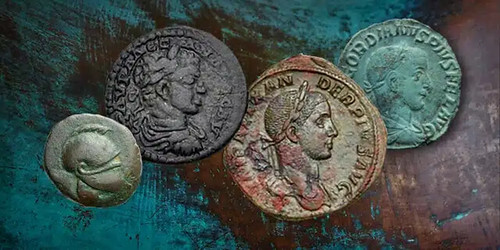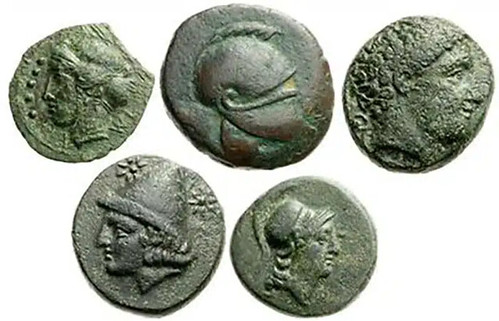
PREV ARTICLE
NEXT ARTICLE
FULL ISSUE
PREV FULL ISSUE
PATINA ON ANCIENT BRONZE COINSTyler Rossi published a nice article on CoinWeek about patina on ancient bronze coins. Here's an excerpt; be sure to read the complete article online. -Editor Unlike modern coins, ancient coins are not held to the same minute condition requirements of the 70-point Sheldon Grading Scale. What matters instead is eye appeal, and one of the main factors that creates pleasing eye appeal is patina. So, what actually is patina? Basically, true patina is any surface oxidation that occurs on the metal of a coin immediately after striking. In modern copper coins, this is the difference between the Red, Red Brown, and Brown color designations. However, in the common parlance of ancient coin collectors, a patina is any coating of foreign material created over the many years the piece was buried in the ground. This oxidization comes in many forms, and is highly reliant on two factors: the environment of the soil the coin was buried in and the type of alloy from which the coin was struck. The most common patina type, green, is formed by copper acetate Cu(CH3CO2)2. This copper oxide is the natural result of a transformation between the coin's copper metal and acetic acid present in the atmosphere. As can be seen on the two examples below, a group of small Greek bronze coins and a 25.5mm AE of Roman emperor Severus Alexander, this green coloration can come in a variety of tones, ranging from almost black to a lighter green.
To read the complete article, see:
Wayne Homren, Editor The Numismatic Bibliomania Society is a non-profit organization promoting numismatic literature. See our web site at coinbooks.org. To submit items for publication in The E-Sylum, write to the Editor at this address: whomren@gmail.com To subscribe go to: https://my.binhost.com/lists/listinfo/esylum All Rights Reserved. NBS Home Page Contact the NBS webmaster 
|


